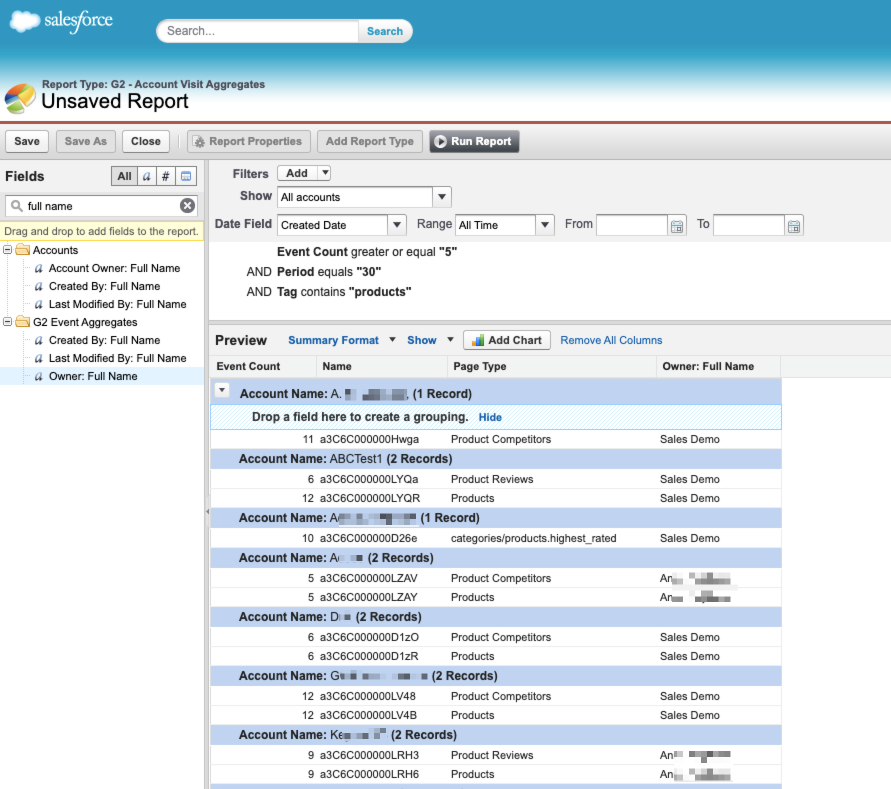This example report shows mapped Salesforce accounts with minimum number of G2 events.
By spotting Salesforce accounts with a certain amount of G2 activity, you can focus on those accounts that have potentially advanced in the buying process. This report can help decide which accounts need the most attention.
Complete the following steps to run this report:
- Go to the Salesforce Reports tab and select New Report....
- Select the Accounts & Contacts folder and then G2 - Accounts Visit Aggregates. Or search directly for G2 - Accounts Visit Aggregates.
- Select Create.
- At the top of the page, select the Show dropdown and select All accounts.
- In the Date Field drop-downs, select the desired options for the date range the report should cover (for example, Current and Previous Month). For this report, G2 recommends selecting All Time for the Range field.
- In the Preview window, select the Format dropdown and select Summary to change the report format.
- Select the Account Name column header dropdown and select Group by this Field to turn Account Name into a report grouping.
- In the Filters section at the top of the page, select Add. For the dropdowns in the Filter section, select Event Count and greater or equal, and then enter 5 in the third space. Select OK to save the filter.
- Depending on the needs for this report, you might want to adjust the Event Count number higher or lower to better target Salesforce accounts with a certain G2 activity frequency.
- Select Add again. For the dropdowns in the Filter section, select Period and equals, and then enter 30 in the third space. Select OK to save the filter.
- Select Add again. For the dropdowns in the Filter section, select Tag and contains, and then enter products in the third space. Select OK to save the filter.
- Select the Period, Time, and Tag column headers and select Remove Column. The filters applied in previous steps make this information redundant in the report.
- Select and drag the Owner: Full Name field (G2 Event Aggregates folder) from the left-hand side Fields bar to the right-hand side of the report. The columns in the report should now match the following:
- Event Count: The number of G2 events included in an event aggregate.
- Name: The name of the event aggregate item.
- Page Type: Indicates the type of G2 pages that were included in each event aggregate. For example, Product Reviews means the event aggregate includes only views of product review pages. This information can be useful to determine the nature of the activity for each mapped Salesforce account.
- Owner: Full Name: The Salesforce account owner for each account with event aggregates.

- At the top of the page, select Save.
- In the Save Report pop-up, enter a Report Name and a Report Description. Report Unique Name auto-populates.
- Pick a Report Folder from the dropdown, and then select Save.
The report should now be available in the Salesforce Reports tab in the report folder that was selected as the storage location.